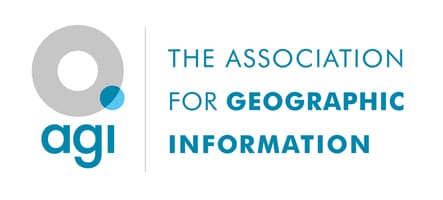In the challenging circumstances of unexpected and catastrophic events, the knowledge, skills and pro-active attitude of GIS volunteers can help co-ordinate resources and map hazards, as was well demonstrated in my homeland of Japan recently.
However, here in Scotland, summer is finally here and to everyone’s surprise it’s been glorious, which has been an unexpected treat. Although, for many of us, the Beast from the East will still be fresh in our memory. It brought weeks of cold and misery, with heavy snow hitting many areas across the county. Leaving chaos in its wake – schools closed, rail and bus services cancelled, with hundreds facing power cuts. In such circumstances, rural communities suffered even worse, with many of them being completely cut off and isolated.
I remember vividly how my own fears grew day after day in what felt like a never-ending period trapped in the frozen kingdom! No public transport, no shop within a 4 miles radius and the roads completely blocked by snow drifts. Only the neighboring community is beyond the big wall of snow, all with limited supplies. Worse for me, was having a three-month-old baby to feed. It was a seriously worrying situation, despite our preparation. Day after day, looking out the window, hoping to see a snow plough or even another human being. It took two weeks before I finally managed to drive down to the nearest shop! What scared me was not knowing – no idea whether anyone would come to rescue me and my family if the conditions continued as they were. And if they were to come… when? How long were we going to be locked in? At least we didn’t lose our power supply, but so many others did– how did they cope?
When disaster strikes, the function of our society, economy and community is abruptly disrupted. The severity of impact varies depending on the scale of disruption and where it hits – and how we deal with an “unexpected and catastrophic” event.
Living with natural disasters was just a part of normal life in the country where I was brought up. In Japan, school children regularly participate in earthquake drills, where they are instructed to retreat under desks when the alarm bells ring. Almost every household keeps an emergency kit in the cupboard. Of course, earthquakes are not the only natural disaster that affects Japan – floods, landslides, volcanos, tsunamis, typhoons and heavy snows are all a risk. Therefore, it should come as no surprise that the use of GIS in disaster response is widely recognised there. When there is an urgent need to capture, visualise, analyse and share location-based information, GIS comes into play.
For example, when a magnitude 9 earthquake struck north-eastern Japan on 11th March 2011, tens of thousands of relief workers, governmental agencies and foreign military personal joined in the recovery efforts. It is a little known fact that geospatial tools developed by companies outside Japan played a vital role in assisting relief workers get to where they were needed, identifying evacuation routes, co-ordinating recovery efforts and then aiding damage assessment and designing and rebuilding safer infrastructure.
Image: Esri’s nuclear impact map
The image below is taken from the website of Geospatial Authority in Japan, showing how their GIS system is used to prepare for earthquake.
Image: Disaster prevention and mitigation measures based on “Digital Japan”
However, we should also give credit to those who do NOT have expert knowledges – GIS volunteers. The role of participatory GIS at the event of and aftermath of the above mentioned earthquake in Japan is well documented. Approximately 300 GIS volunteers helped setting up WebGIS and actively gathered information to help identify evacuation and transportation routes, rescue needs and an the extent of damage caused.
Citizen led mapping projects are indeed widespread, and a well recognised concept. Involvement of volunteers in humanitarian mapping projects, such as the OpenStreetMap humanitarian mapping project continues and indeed, thrives.
Image: Transportation routes and evacuation sites for relief
Although being struck by a massive earthquake is a remote possibility for UK residents, the risk of emergencies occurring is very real and can affect any of us, at any time. Going back to the Beast from the East situation, is there anything that GIS could do to mitigate the impact? I have few examples to show you the systems used during the snow disaster that hit part of Japan four years ago.
1. Weather news combines with map showing high risk areas
Each icon represents a different type of risk; including floods, heavy rain, high wind, heavy snow, landslides, high tides. It also shows where traffic disruption occurs.
It shows live traffic information which was updated every hour and that can be overlaid with a weather map.
3. Crowd sourced disaster information
Users can upload and view emergency related information ranging from the number of people urgently awaiting rescue, traffic disruption, evacuation centres, medical facilities and emergency supply availability.
The Beast from the East is long gone, but next winter I know I’ll have that nagging fear at the back of my mind. ‘What if…’. Not knowing was the main source of my fear. However, instead of passively waiting for what may be coming next, isn’t this a good time to think about what GIS can do to help us in the time of emergency? What is the role of local authorities, local businesses and organisations and first responders? Can GIS volunteers create crowd sourcing maps for sharing information like the last example here?
The possibility of GIS is almost limitless. Not only for the large scale distribution of data and co-ordination of resources, but also for the peace of mind for those caught up in whatever catastrophe it may be.
Written by Mayuko Morgan
AGI Scotland Committee Member
Early Career Network Scotland Representative
GIS Technician at Bell Ingram LLP

